This guest post is a whistleblower account of a failed attempt to report massive research fraud at the Temple University using so-called proper channels. The case is of neuropathology professor and Alzheimer’s centre director Domenico Praticò, who has not retracted even one single paper, and he might never have to. Two and a half years passed since the whistleblower tried to inform the university authorities, the NIH, HHS-ORI, journal editors, the publishers: all of them refused to do anything.
The Pratfalls of Domenico Pratico
Next time you wonder why mouse research does not translate to humans, think of Domenico Pratico work on Alzheimer’s and other brain diseases.
Last year, Pratico even got another NIH grant of half a million dollars. There are currently 34 fraudulent papers from Pratico’s lab on PubPeer, and more is being found whenever image integrity sleuths bother to take another look:
Nobody at all cares. And now, the whistleblower account.
Hello? Anyone there?
By Anonymous
To imagine what it’s like to be a whistleblower in the science community, imagine you are trying to report a Ponzi scheme, but instead of receiving help you are told, nonchalantly, to call Bernie Madoff, if you wish.
In late January of 2020, I noticed suspiciously “pretty” behavioral data in several papers from lab of Domenico Pratico. In the task called Morris Water Maze, according to the graphs in Pratico lab’s papers, the mice showed perfectly straight and linear learning curves with miniscule within-group and sometimes between-group variabilities. This is very strange considering that the subject mice are very old (>10 months) and are on a genetic background prone to having vision impairments, which would interfere with the animal’s performance in the spatial learning test that requires vision. I communicated with three colleagues in the field of behavioral neuroscience, and all agreed that what I found pointed to something very troubling.
To really verify my specific concerns on Pratico lab’s data collected in the Morris Water Maze Test, on February 10, 2020, I sent an email with four Pratico papers to the person who invented the Morris Water Maze in the 1980s — Dr. Richard Morris at the University of Edinburgh. Within half an hour of receiving the email, Dr. Morris replied:
“ Thank you for sending me these data.
I have had a skim-read through and, indeed, they do require a certain “suspension of disbelief”. Which is how the British diplomatic service describes things of which don’t believe a single word!
I think the best thing is from to look these data over again this evening to see if my initial impressions overlap with yours. If they do, then the question arises of how I might help you?
One possibility is that you proceed with some query to the editors of the various journals but backed by some “independent” signed statement from myself about the credibility of the data.
But don’t let me get ahead of myself. My ethical duty to you would be (a) to be alert to your concerns and then (b) approach the data with an open mind in the peace and quiet of my study at home and write back. It may take me two days as there is thick snow coming down and I’m not even sure I’ll get home!!
Kind regards and thanks for alerting me to this potential “fraud” or whatever it is.”
The next day, Dr. Morris sent me a signed written analysis of the four papers, which provide critical support to several issues I had raised.
Around the same time, my peer contacted her program officer at the National Institute of Aging (NIA). The person was also the program officer on one of Pratico’s grants that funded one of the studies described in our formal report. On February 14th, 2020, the program officer replied to one of my fellow whistle blowers:
“Thank you for alerting me to this disturbing occurrence.
What you are reporting is disturbing at a minimum of two levels.
First, according to your expert opinion the data appear to be too “perfect” to be real, giving rise to suspicions of data fabrication by the authors.
Second, even if the data have not been falsified it appears that the experiments were not performed using recommended best practices, i.e., with the proper rigor nor, were the experimental details reported with sufficient transparency.
In my opinion the practice of publishing papers that include suspect data not acquired using best practices should be viewed as anathema to science and, to society as a whole since it betrays the public trust in scientists and science as an important institution.
The journals should function as a firewall against publishing data of this kind. But, they generally fail to fulfil this function, for a variety of perverse reasons. This makes them complicit in the dissemination of bad and worse – dishonest science.
So, you and your colleagues, as ethical professionals and experts in the field, are operating as the firewall and thereby, in my opinion doing the right thing.
I am not certain what we (NIA) can do through the AlzPED. Perhaps we can highlight the articles as cases studies of poor rigor in study design and data analysis.
I suggest that you and your colleagues consider contacting the Office of Research Integrity and exploring the options there.
Here’s the link to ORI:
To provide further assistance in this matter we will probably require the specific references to which you refer. “
With the program officer’s suggestions and Dr. Morris’ statement, I and my fellow whistle blowers decided to compile a formal report, written by me and co-signed by the other two. In the report, I explained, in straight scientific terms, why the data are either fraudulent and/or had been substantially altered. On February 18th 2020, I sent the co-signed report, together with Dr. Morris’ letter, to the US Federal Office for Research Integrity (ORI).
Since the Federal ORI did not reply after a week (and not until April), in late February 2020 I sent the same documents to four journals that published many of Pratico’s papers — Aging Cell, Molecular Neurobiology, Molecular Psychiatry, and Biological Psychiatry. The responses from these journals varied from mildly concerned to antagonistic. The four editors in chief at Aging Cell received the documents from me in February but did not respond until I followed up in June 2020. When responded, the then one of the editors-in-chief, Dr. Ana Maria Cuervo emailed me back:
“Thank you for your email and response.
Aging Cell, as many of the other journals, has a very specific course of action in response to any concerns raised over published work. In all these situations, after discussion among the editorial team (as we have done in this case), the author is always given the opportunity to answer the concerns, and if needed to provide additional data or analysis in response. Only in those cases in which after evaluating claims, response of the authors and data, the editorial team consider that there is clear evidence of fraud or unethical behavior, the integrity office and leadership of the institution where research has been conducted is contacted.
These steps are in place to assure that every claim is given full consideration, and also that authors are protected from claims based on reasons other than pure scientific evidence and that they are given the opportunity to clarify, and if necessary, remediate any discrepancy.
Please, let me know if you want us to proceed with the next step of this process that will be to share the information you and your colleagues provided with Dr. Pratico and as him to address your concerns.”
This response certainly functionally deters one from whistle blowing, and it is very disappointing.
Biological Psychiatry responded quickly and contacted the interim dean of the Lewis Katz School of Medicine at Temple University in early March. When I followed up with the journal in June 2020, one of the Editors-in-Chief at Biological Psychiatry, Dr. Eric Nestler, emailed saying
“By necessity, and consistent with convention, this is now in Temple’s hands. You should feel free to follow up with Temple directly”.
Editors at Molecular Neurobiology and Molecular Psychiatry said they were doing their own investigations, but nothing came out of it.
On April 17th 2020— two months after receiving the email from me without replying — the Federal ORI assigned the case to an agent who agreed to review the documents from me. When I followed up in early June 2020, an ORI officer emailed back, saying
“Thanks again for your reaching out to ORI. I apologize for the belated response to the issue you raised. DIO reviewed the four papers regarding your concerns and considers that those are not under ORI’s jurisdiction, for the following reasons:
- ORI only has jurisdiction on the research supported by PHS funds. However, only one of the four papers you concerned (Biological Psychiatry 2015) cited NIH grant(s).
- ORI only has jurisdiction on possible falsification, fabrication, and plagiarism, which does not include either different scientific opinions or the questions on the unrepeatable results between different laboratories. Your concerns on the experiment design, the data collection, and the data analysis and presentation of the four papers published from the same laboratory are beyond the defined f/f/p in the federal regulation. At least considering the current evidence you provided (no direct evidence about possible f/f/p), ORI is unable to assist.
However, like what you already did, ORI suggests you contact the journals, the authors, and even the institution to discuss your concerns.
I hope my response helps. If you don’t have any specific allegations with evidence about possible f/f/p, ORI consider to close this matter. Please feel free to contact me if you have any more questions.”
This was extraordinary in an awful way, because our report, while written without the use of aggressive language, was clear and very direct. I vigorously rebutted the ORI’s response and was able to convince ORI to re-open the case. That was needed also because an officer for NIH/NIA responded to my complaint in June 2020 with this:
“I would suggest you to contact the PI directly so he can address your concerns. Thus, we can have a more transparent and open scientific discussion.“
By this time (June 2020), I had compiled a second document that listed manipulated non-behavioral data that I found (western blots, histology, electrophysiology) and sent it to the ORI. In late June, ORI issued a “request for assessment letter” to Temple University. Who was contacted and what was conveyed in the ORI letter was not disclosed to me. Mission seemed accomplished (or so I thought). Knowing this sort of things usually takes a long time, I did not heed this matter for the next 3 months. In October 2020, I randomly looked up Domenico Pratico and saw the news (dated Sept 24th) that a $3.8 million grant was awarded to the Alzheimer’s Center and Temple, led by Dr. Pratico, and that Dr. Pratico will co-lead the animal studies supported by the grant from Pennsylvania State.
Concerned, I contacted the Federal ORI and asked if they plan to follow up to see if any “assessment” had been done or planned for, the reply was
“ORI forwarded the allegations and your related reports to the institution right after we received your allegations and requested the institution to conduct an assessment. Please contact the institution with your inquiry”.
Undeterred, I contacted Dr. Elisabeth Bik, and asked her to look at western blot and histology images in Pratico lab’s papers. She graciously did and posted her thorough analysis on PubPeer. Since I spotted the four papers which caused my initial concerns, there are now over 30 papers from the Pratico lab that are flagged on PubPeer by anonymous people like myself and non-anonymous experts such as Dr. Bik.
Unbeknownst to me, my investigation reached an independent German science blogger, Leonid Schneider, who specializes in covering fraudulent research. Dr. Schneider and I communicated about my experience. Desperately trying to get some publicity on the story to prevent Temple from covering up, I quickly decided to share my reports with Dr. Schneider whose satirical blog was published a few days later. On January 5th 2021, I contacted the VP for Research as Temple, Dr Michele Masucci:
“Dear Dr. Masucci,
I am the lead whistle blower (along with Dr. Richard Morris and two peers) who reported on Dr. Domenico Pratico to the federal ORI and several journals last year. My work was substantiated by Dr. Elisabeth Bik, a leading expert in scientific integrity in biological sciences, and by Dr. Schneider who publicly reported the case in a blog format, and by many anonymous individuals who commented on the TWENTY SEVEN papers from the Pratico lab flagged on Pubpeer.
If I could be of any assistance or answer specific questions, please let me know.”
She acknowledged the receipt of my email on the same day.
“This note is to acknowledge receipt of your email dated January 5, 2021.”
On the journals’ front, a Springer Nature’s Scientific Integrity Manager, told me on Jan 5th of 2021
“I can assure you that no EiC is swiping anything under the rug, and that we’re currently neatly following COPE guidelines on all articles you’ve flagged”.
When I contacted this person in July 2022 and asked why the case is not being moved forward despite mounting evidence, he replied
“It’s not a matter of evidence, but a matter of process. My team is pushing this, but we are ‘only’ the publisher. Any post-publication editorial action (for example a retraction) has to be taken by the Editor-in-chief. An EiC has the final say in these cases and my team is making sure we’re following the right process (and along the way we certainly don’t shy away from making certain recommendations), and we’re also trying to make sure that the process keeps moving forward.”
This makes sense until the EIC of Molecular Neurobiology, Dr. Benedict Albensi replied me on Twitter, saying “The publisher has been notified.”. This was in July 2022. Looking through my emails, I saw that in April of 2020, which was over two years ago, the editor at Molecular Neurobiology wrote:
“I have informed Dr. Albensi accordingly. We are currently investigating this issue in conjunction with our Research Integrity Group and the Editor of Molecular Psychiatry. I will keep you updated.” Hmmmm……*insert disappointed emoji*
Anyway, I am confused regarding who is responsible, the EIC or the publisher or the university or NIH or ORI or ……anyone at all?? Hello? Anyone there?
PS by L. Schneider
I reached out to the editors named in this article. Save for one, nobody replied. Confronted with the whistleblower’s suspicion that Aging Cell revealed their identity to Pratico (who remains their editorial board member!), the former Editor-in-Chief Ana Maria Cuervo protested:
“We never reveal the identify of any claim challenging any of the manuscripts in Aging Cell to the authors of the manuscripts.”
She also told me (highlights mine):
“We have revised each of the steps that we undertook in response to the accusations against Dr. Pratico’s publications in Aging Cell and after careful consideration we have concluded that we followed the appropriate procedures in agreement with the Wiley publishing ethics guidelines. We gave the author the opportunity to respond and provide additional material. The material and extensive responses provided were reviewed by the full panel of editors in chief at that time and it was concluded that there was no evidence of intentional wrong-doing in any of the challenged Aging Cell publications.”
That is just nasty. Have a look at this, the paper was merely 2 years old when Cuevo received the evidence from the whistleblower:
Phillip F. Giannopoulos , Jian Chiu , Domenico Praticò Antileukotriene therapy by reducing tau phosphorylation improves synaptic integrity and cognition of P301S transgenic mice Aging Cell (2018) doi: 10.1111/acel.12759
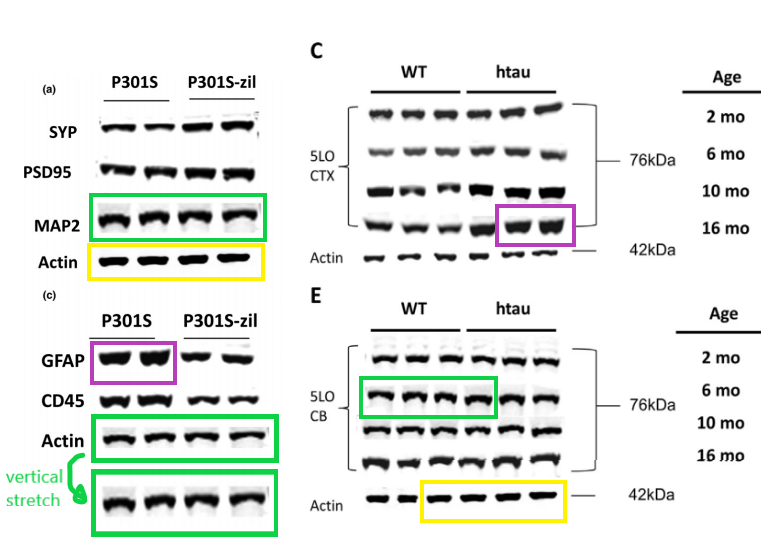

The wildtype latency to platform data seem remarkably similar in Figure 2 in (Giannopoulos et al., 2015), Figure 1 in (Giannopoulos and Pratico, 2018), and Figure 1 in (Giannopoulos et al., 2018). This is notable, given that 10 months old mice were said to be the subjects in (Giannopoulos et al., 2018; Giannopoulos et al., 2015), whereas 11-12 months old mice were said to be the subjects in (Giannopoulos and Pratico, 2018).“
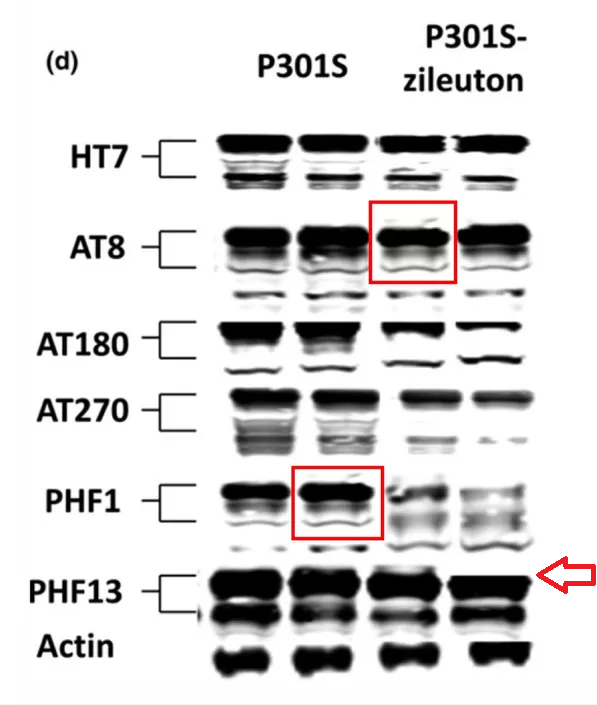
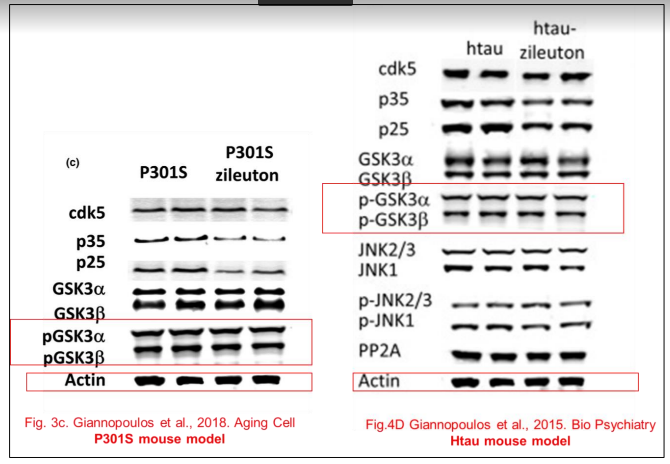
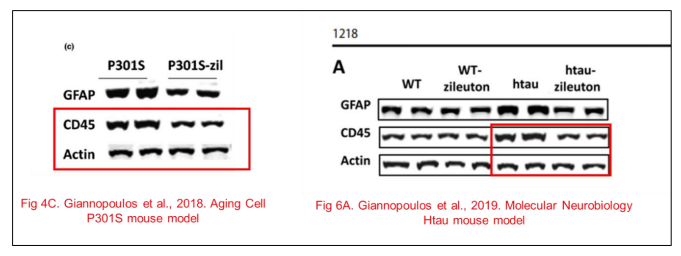
What kind of failed scientist does one have to be to determine “no evidence of intentional wrong-doing” in that fraud orgy? Or in this:
Phillip F. Giannopoulos , Yash B. Joshi , Jin Chu , Domenico Praticò The 12-15-lipoxygenase is a modulator of Alzheimer’s-related tau pathology in vivo Aging Cell (2013) doi: 10.1111/acel.12136

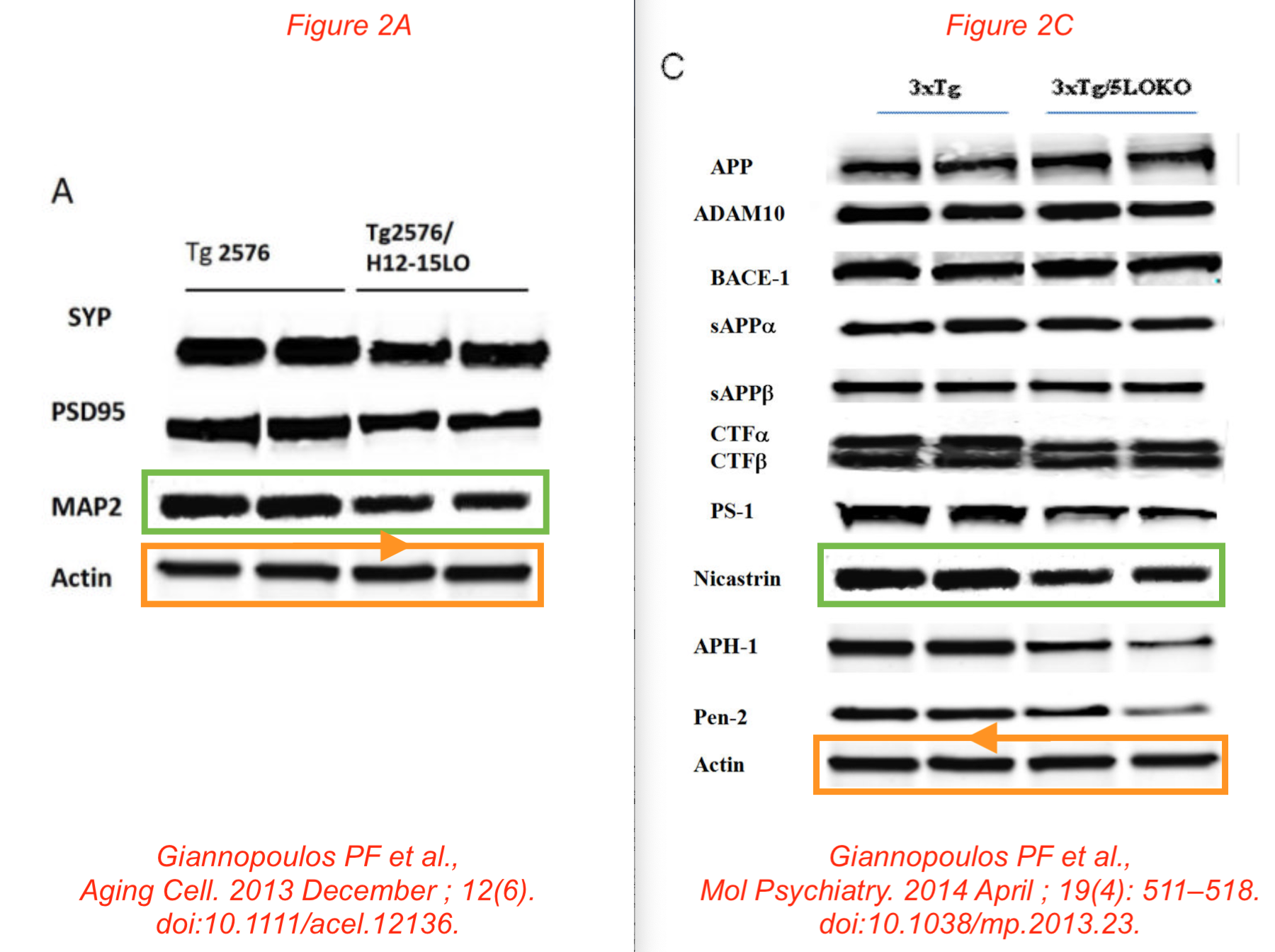
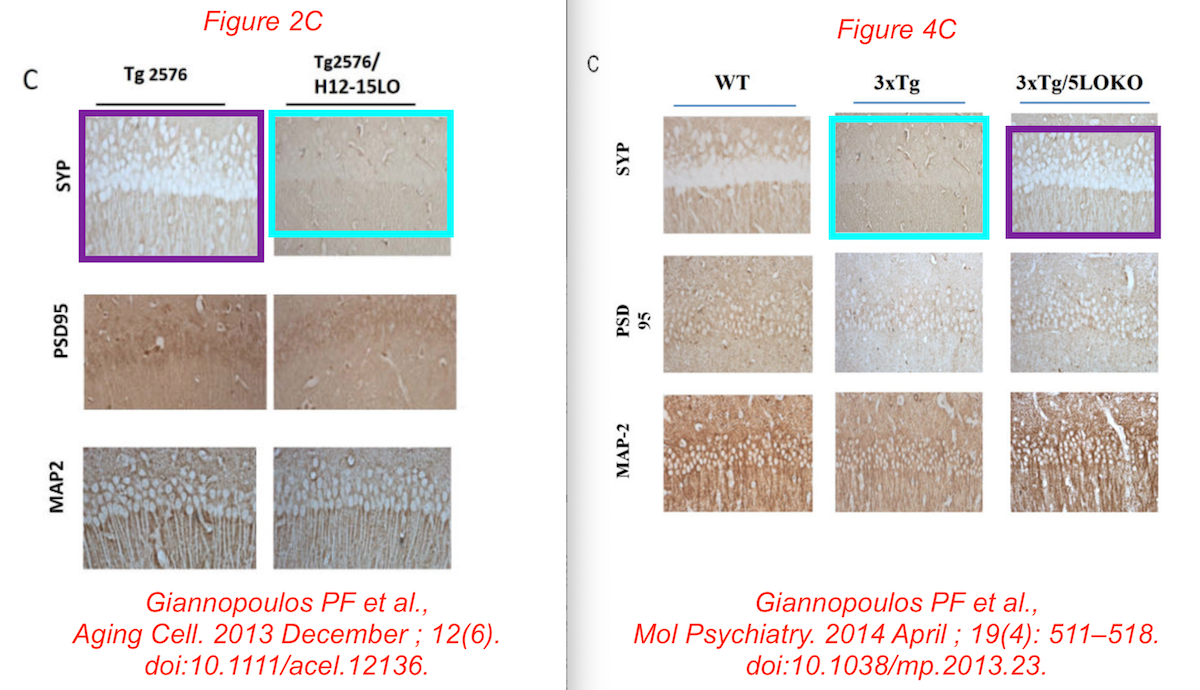
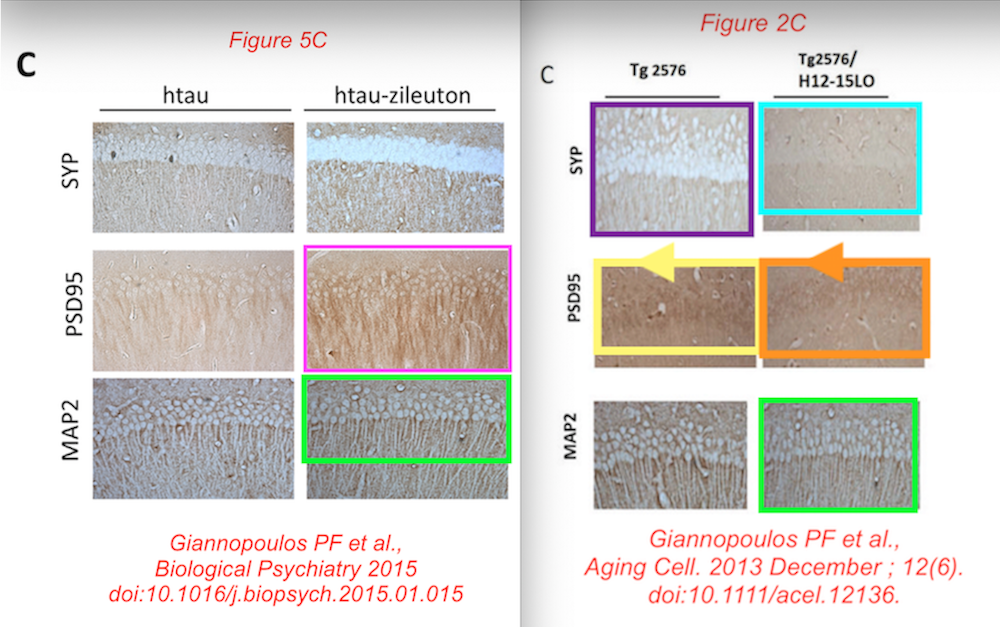
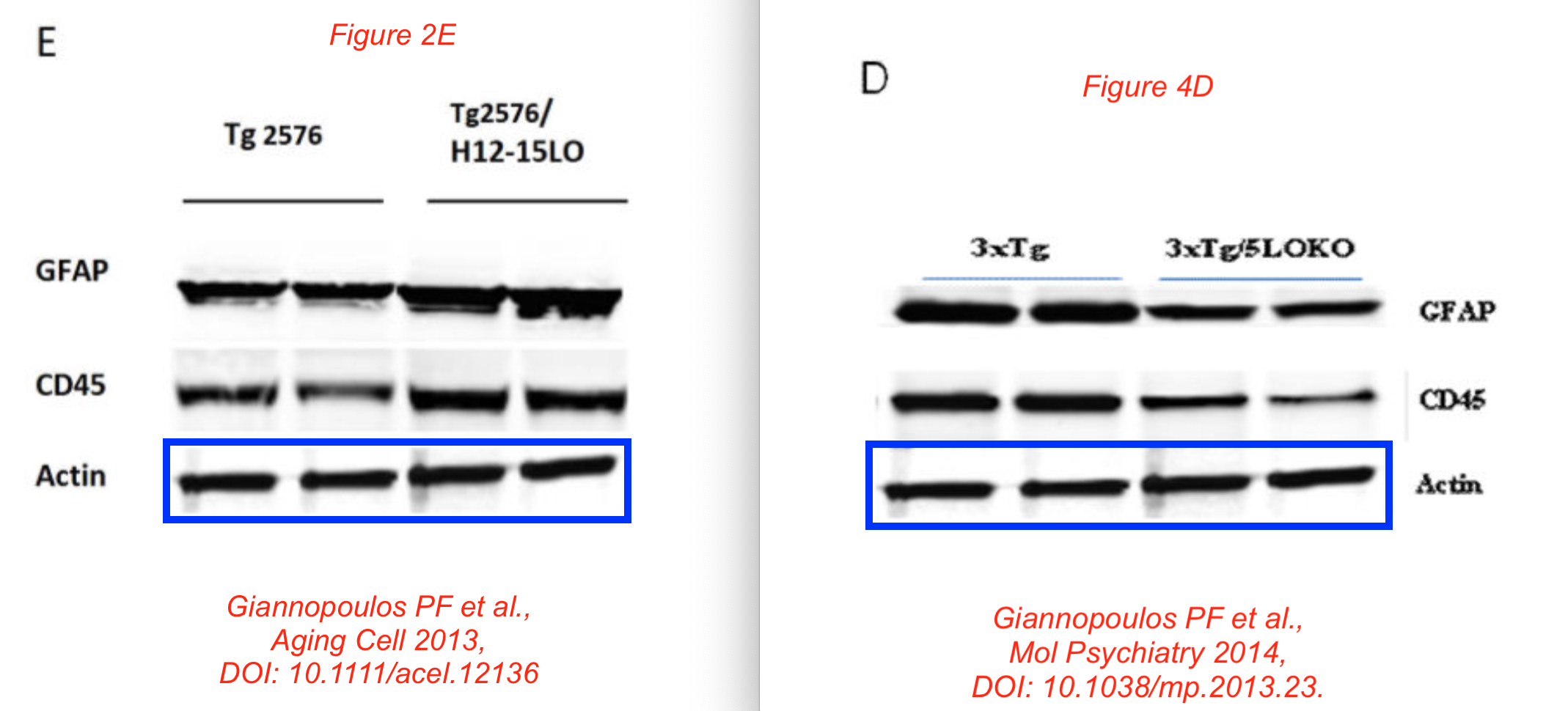
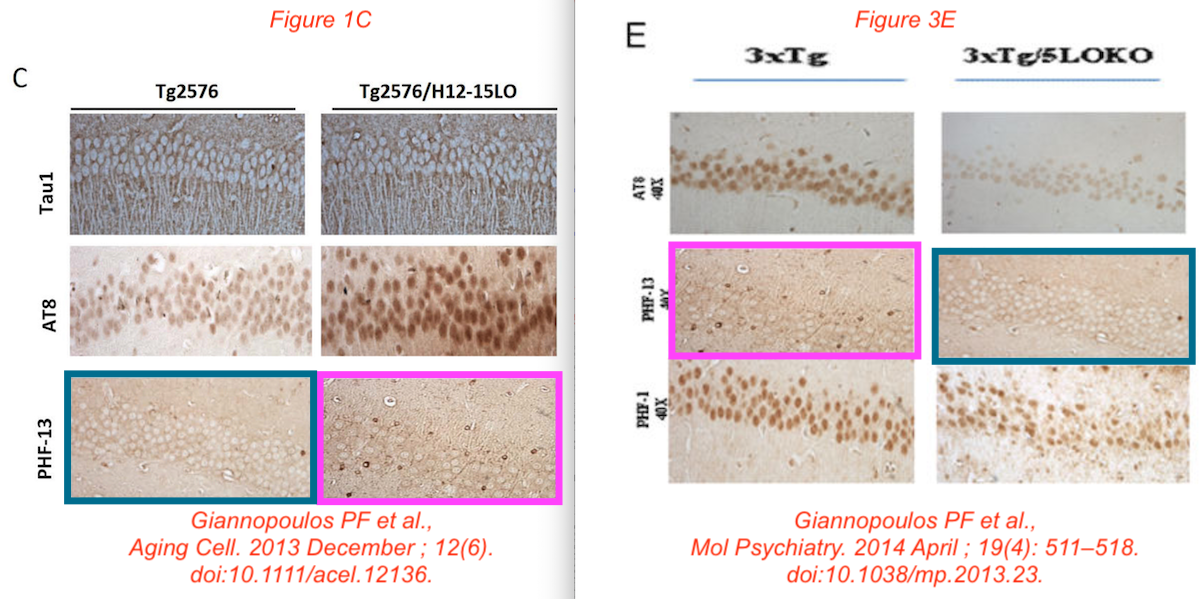
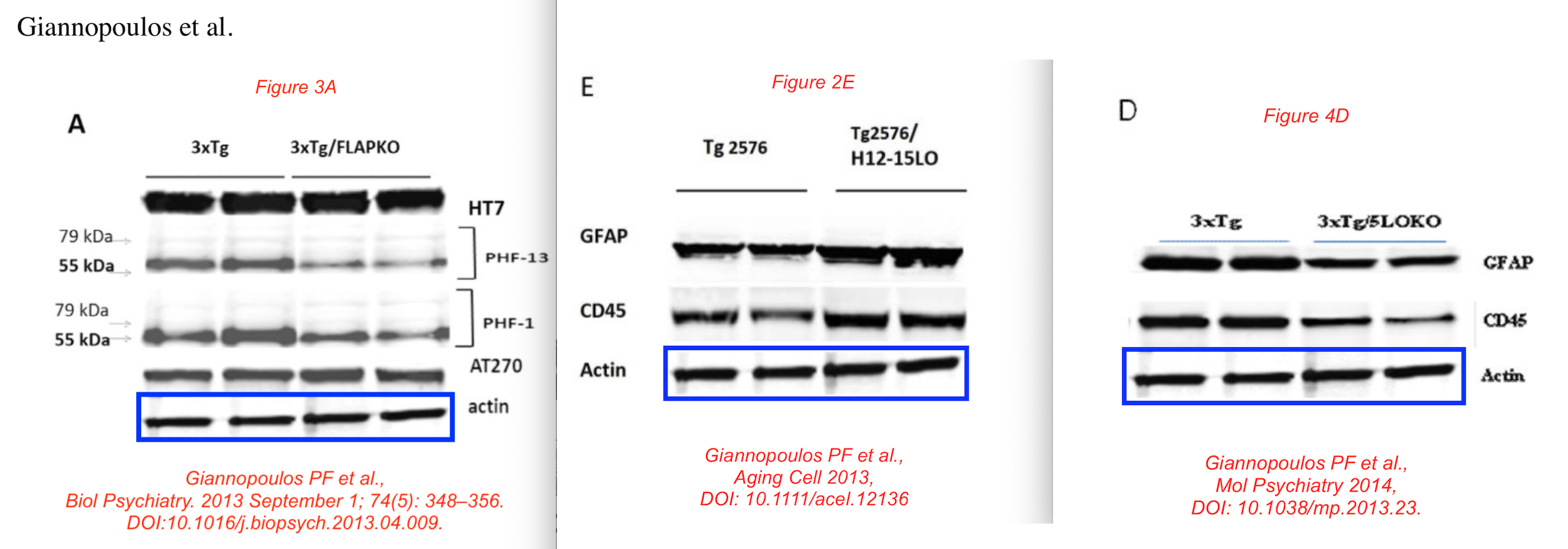
Here another one from 2018, a recent find:
Alana N. Vagnozzi , Phillip F. Giannopoulos , Domenico Praticò Brain 5-lipoxygenase over-expression worsens memory, synaptic integrity, and tau pathology in the P301S mice Aging Cell (2018) doi: 10.1111/acel.12695
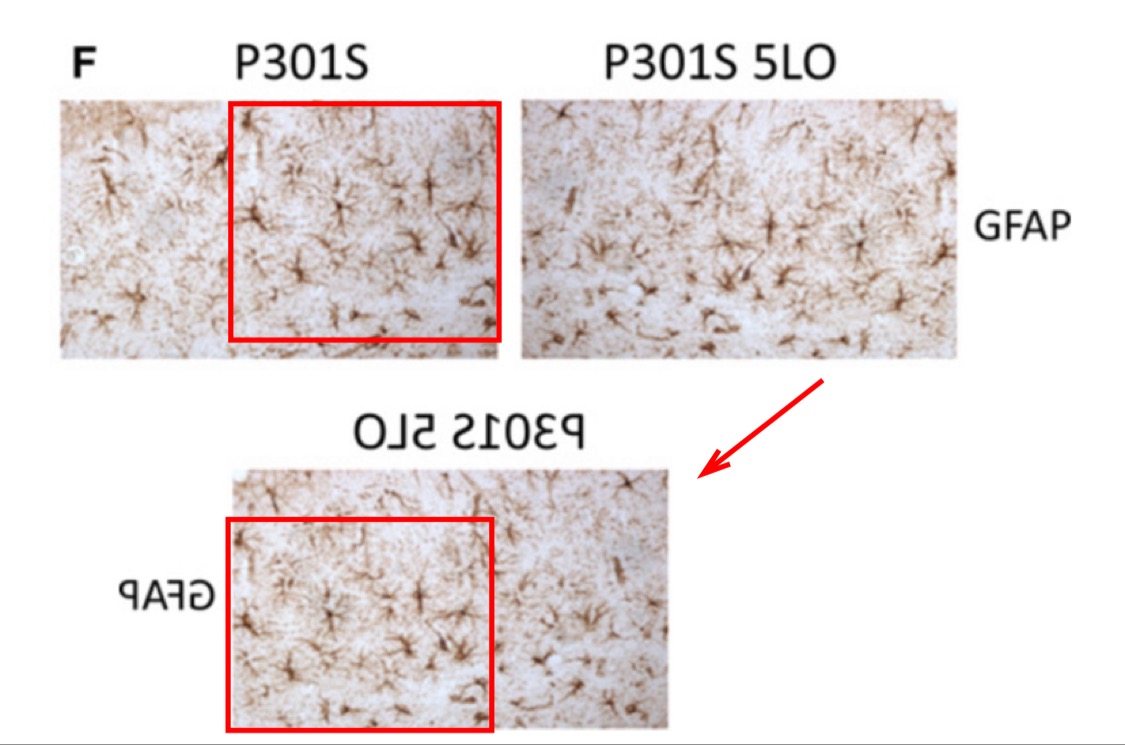
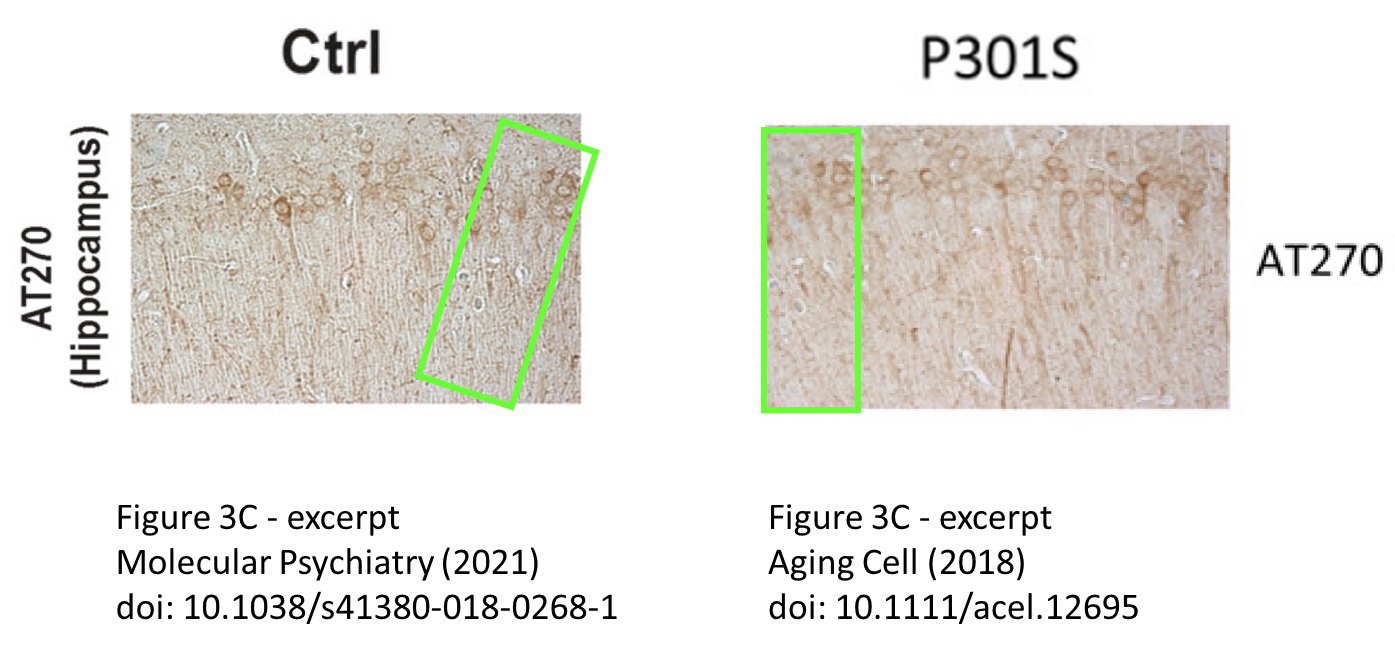
In any case, this journal’s five current Editors-in-Chief (not Cuervo) have now resigned due to a conflict with Wiley. They did so most certainly not over research integrity concerns, but over demands for higher personal financial reimbursement, i.e. money.
Other editors named above remained silent. Springer Nature sent me this statement:
“We became aware of possible issues regarding these papers and have been looking into the concerns carefully, following an established process and in line with best practice COPE guidelines. As the investigation is still ongoing, we cannot provide further details at this time.”
The papers they are investigating are just as fake as those in Aging Cell, sometimes even worse. What exactly is unclear with this paper for example, dear Springer Nature?
Phillip F. Giannopoulos, Jian Chiu, Domenico Praticò Learning Impairments, Memory Deficits, and Neuropathology in Aged Tau Transgenic Mice Are Dependent on Leukotrienes Biosynthesis: Role of the cdk5 Kinase Pathway Molecular Neurobiology (2019) doi: 10.1007/s12035-018-1124-7
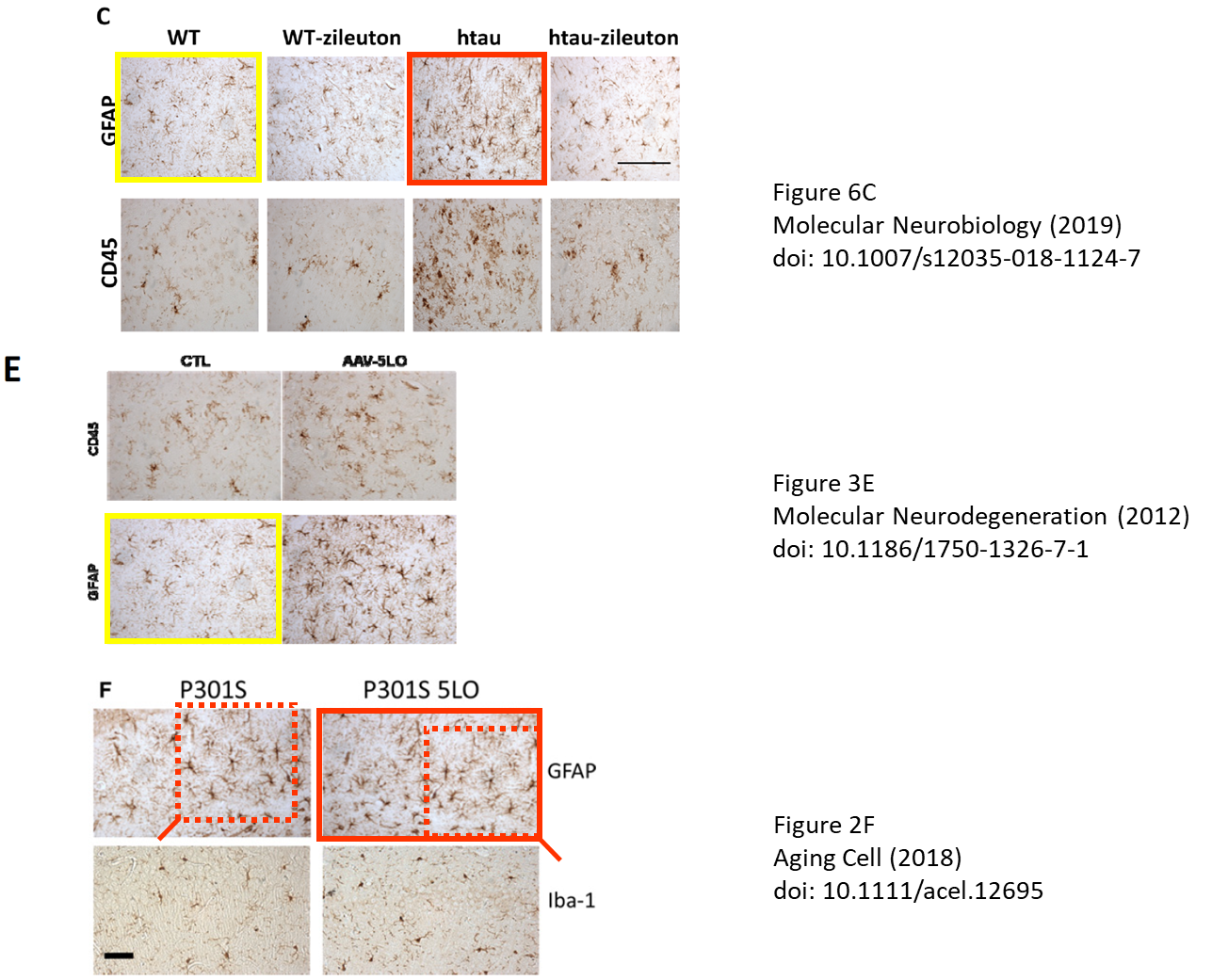
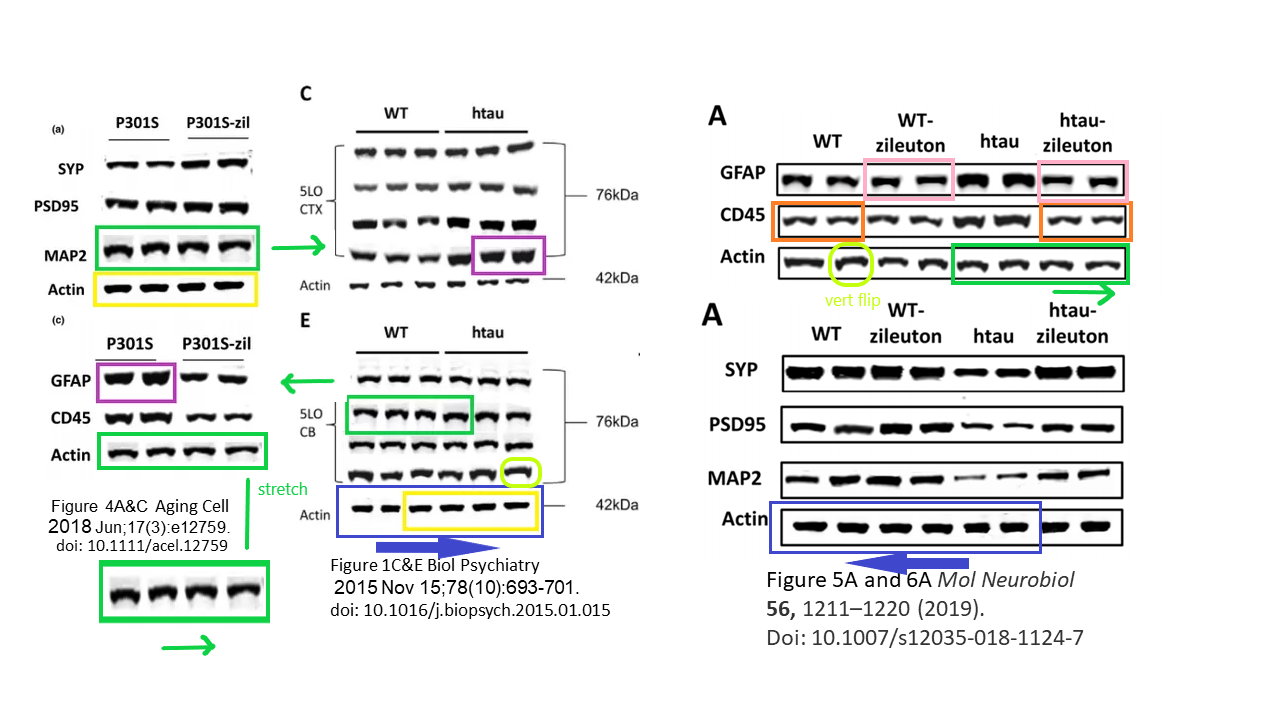
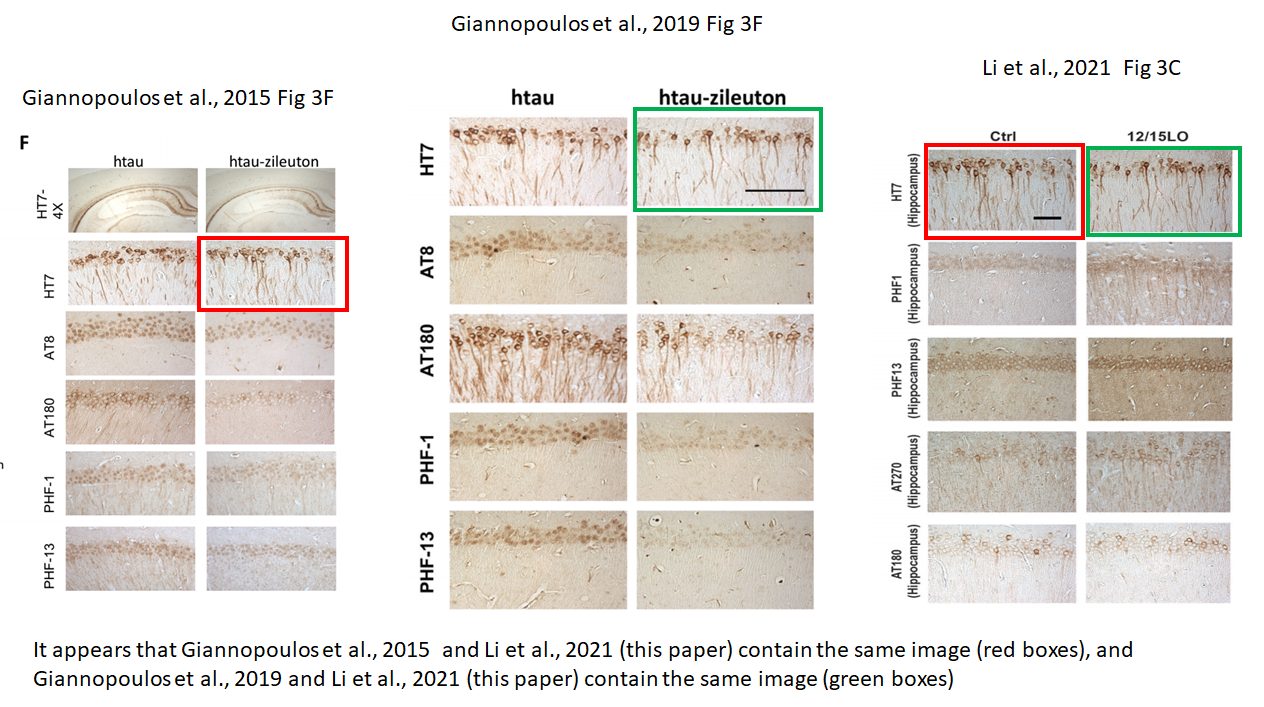
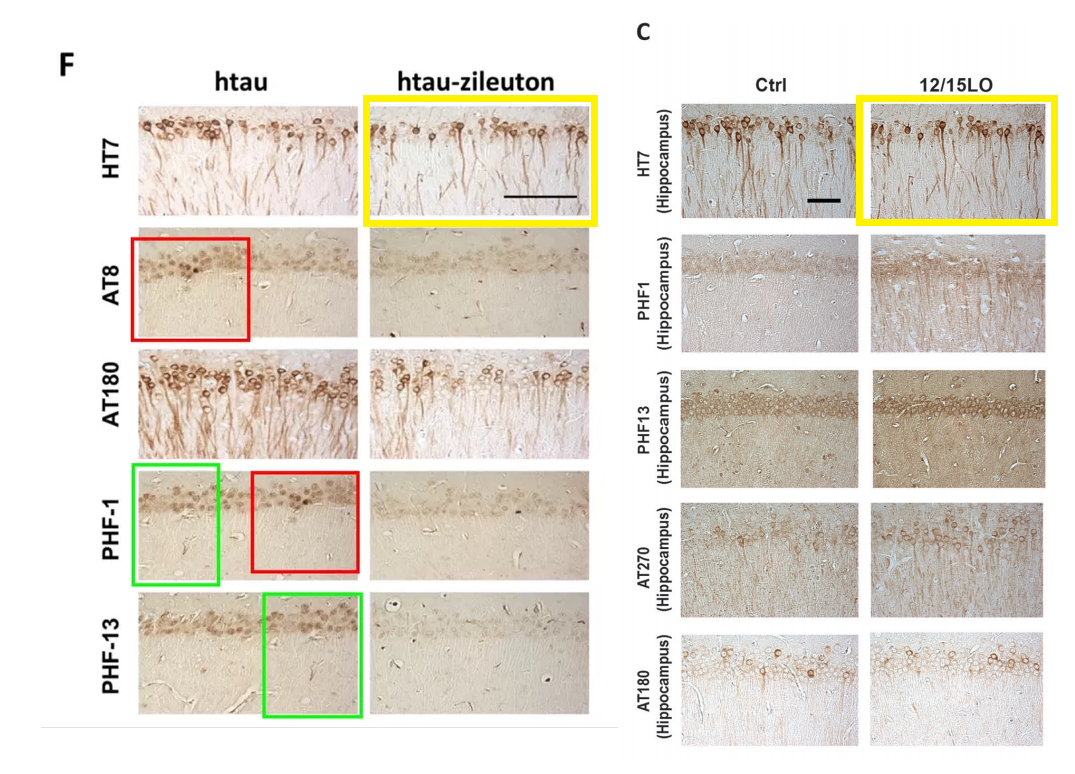
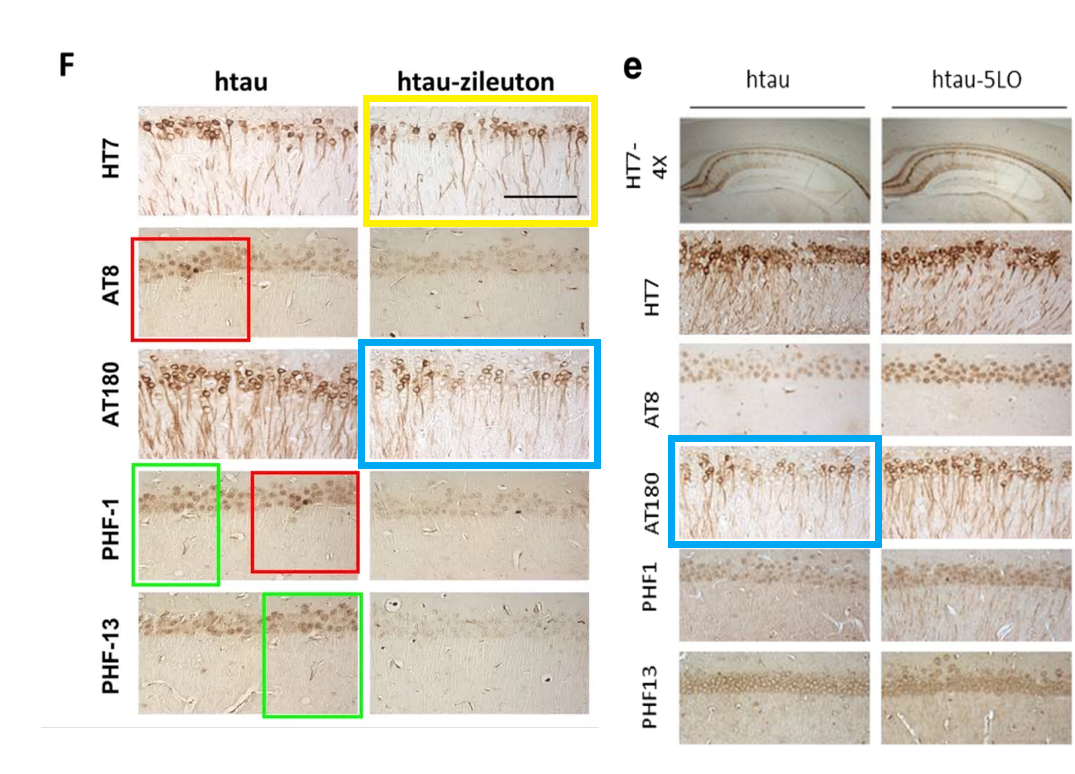
There is much, much more fraud in that one publication, have a look on PubPeer. But you read above that Benedict Albensi, professor of pharmacology at University of Manitoba in Canada, prevents any action. Meet another failed scientist.
Maybe also in all those other journals such editorial failed scientists oppose retractions? It certainly looks so. Also, if the failed scientists at the Temple University do nothing, maybe the publishers won’t do anything either?
It looks like also NIH and even HHS-ORI are waiting for Temple to decide on Pratico’s case. They can wait for the rest of the century because apparently nobody is investigating there anything, simply because there’s too much fraud going on at Temple. Plus, those responsible for investigation are leaving.
Steven Houser and the Temple of Fraud
“We all hype our work. We want to tell people our work is important. These patients, many of them coming to enroll in these trials, they have no other hope.” -Steven Houser, Hero of Research Ethics, Temple University
Antonio Giordano and the Sbarro Pizza Temple
“The relentless defence of duplicated, fabricated or falsified data is, per se, a form of serious misconduct…” Antonio Giordano, President of Sbarro Pizza Institute at Temple University
Vice president for research Michele Massuci now told me that “Temple is unable to comment on personnel matters.” But it doesn’t matter because she herself has just left Temple, for the same kind of job at the University System of Maryland.
I also reached out to some Alzheimer’s researchers to get their views on Pratico’s science. Having previously successfully cured Alzheimer’s with leukotrienes and olive oil, Pratico moved onto a new target, that of the “vacuolar protein sorting 35” (VPS35). In two recent papers (Li et al 2020 and Vagnozzi et al 2021), he claimed that this VPS35 is “a new therapeutic target for human tauopathies.” The latter paper already had to be corrected for data fudgery.
In this regard, Scott Small, professor of neurology at Columbia University and a bigwig in the Alzheimer’s field, merely said:
“I find this work fascinating. I gather you are interested in something more. But Dr. Practico is not a colleague and I was not a reviewer of these papers.”
Now, it is strange Small can’t say more. Because first, his lab specialises on VPS35 and second, in a recent VPS35 paper from his lab, Qureshi et al 2022, he referenced these two Pratico papers. Obviously without reading them properly, their titles being “fascinating” enough?
Sylvain Lesné is a failed scientist
From Lesné’s public shame to successful role models of neuroscience like Aguzzi and Tessier-Lavigne.
This attitude is exactly why Sylvain Lesne‘s phony Alzheimer’s research was cited so many times while everyone long suspected it was fraudulent. Biomedical science is too often a mafia-like circular scam where one hand washes the other. Even if they know a colleague is a fraudster, they will continue citing their papers, and get cited back, they will positively peer review each other’s grants, papers and even award applications, they will demonstratively invite each other to conferences, and if despite all that precaution trouble arises, they will sit on each other’s research misconduct investigative committees. And of course they will continue setting up biotech companies together, and they will continue bullshitting the patients about their new breakthrough miracle cures for Alzheimer’s or other diseases. All to keep your money flowing into their pockets.
At some point, many whistleblowers leave academia, voluntarily or not. Pratico and his breed will remain.

I thank all my donors for supporting my journalism. You can be one of them!
Make a one-time donation:
I thank all my donors for supporting my journalism. You can be one of them!
Make a monthly donation:
Choose an amount
Or enter a custom amount
Your contribution is appreciated.
Your contribution is appreciated.
DonateDonate monthly


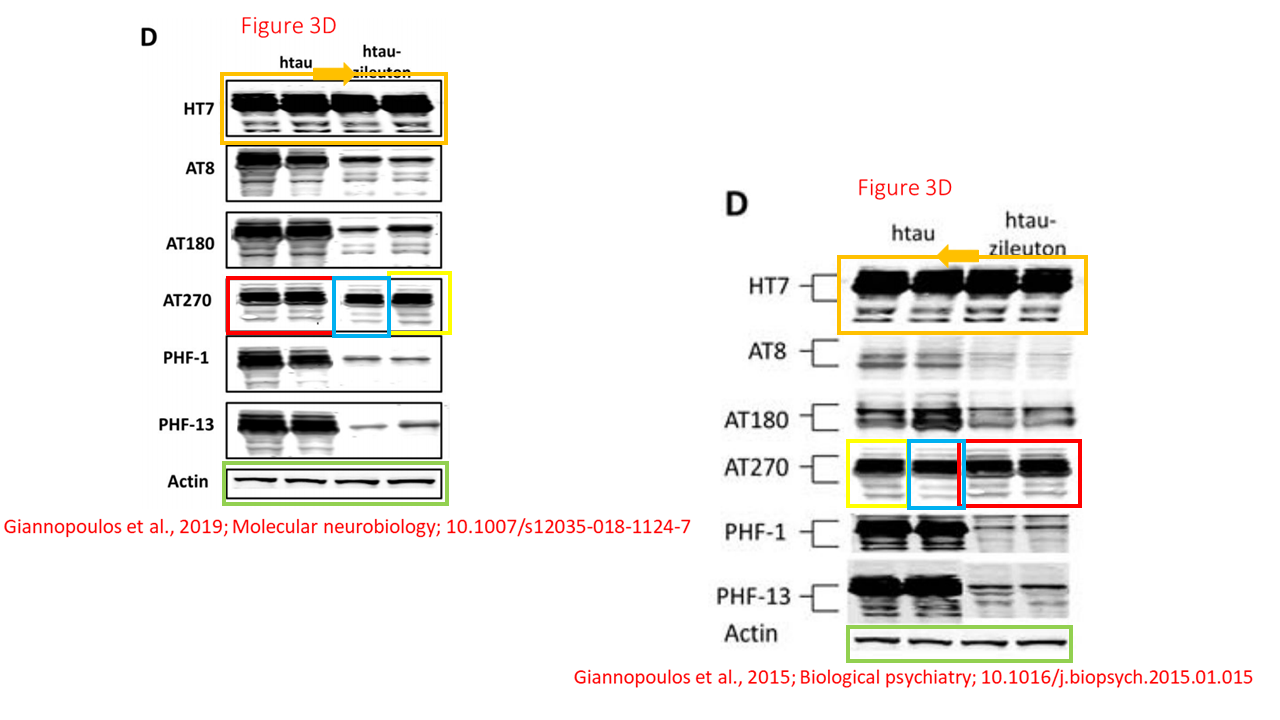
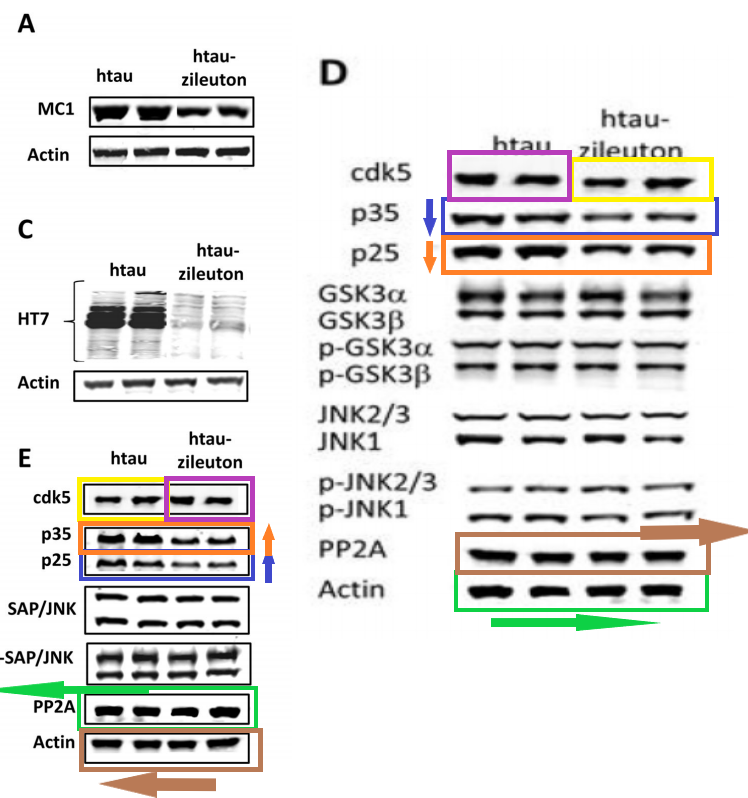
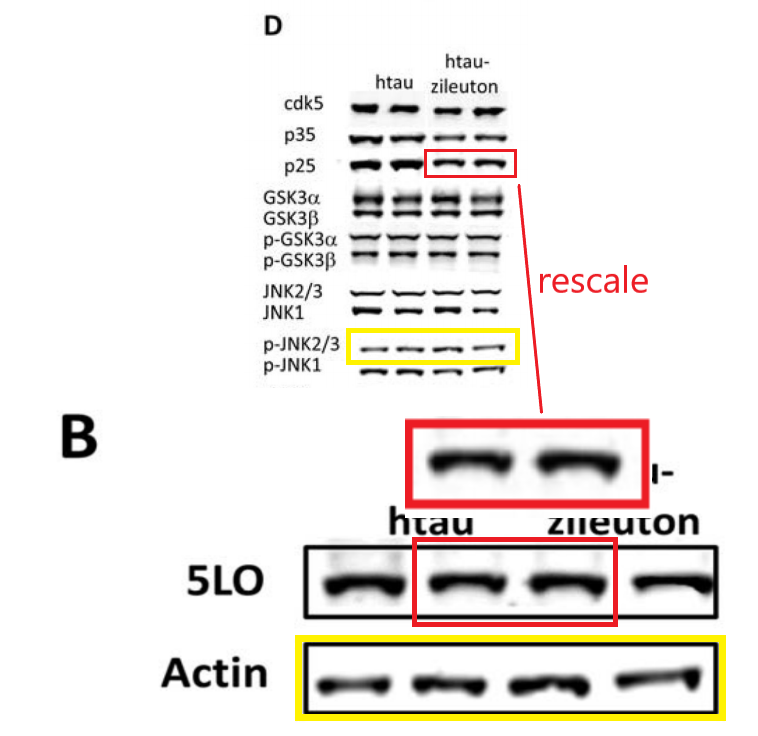

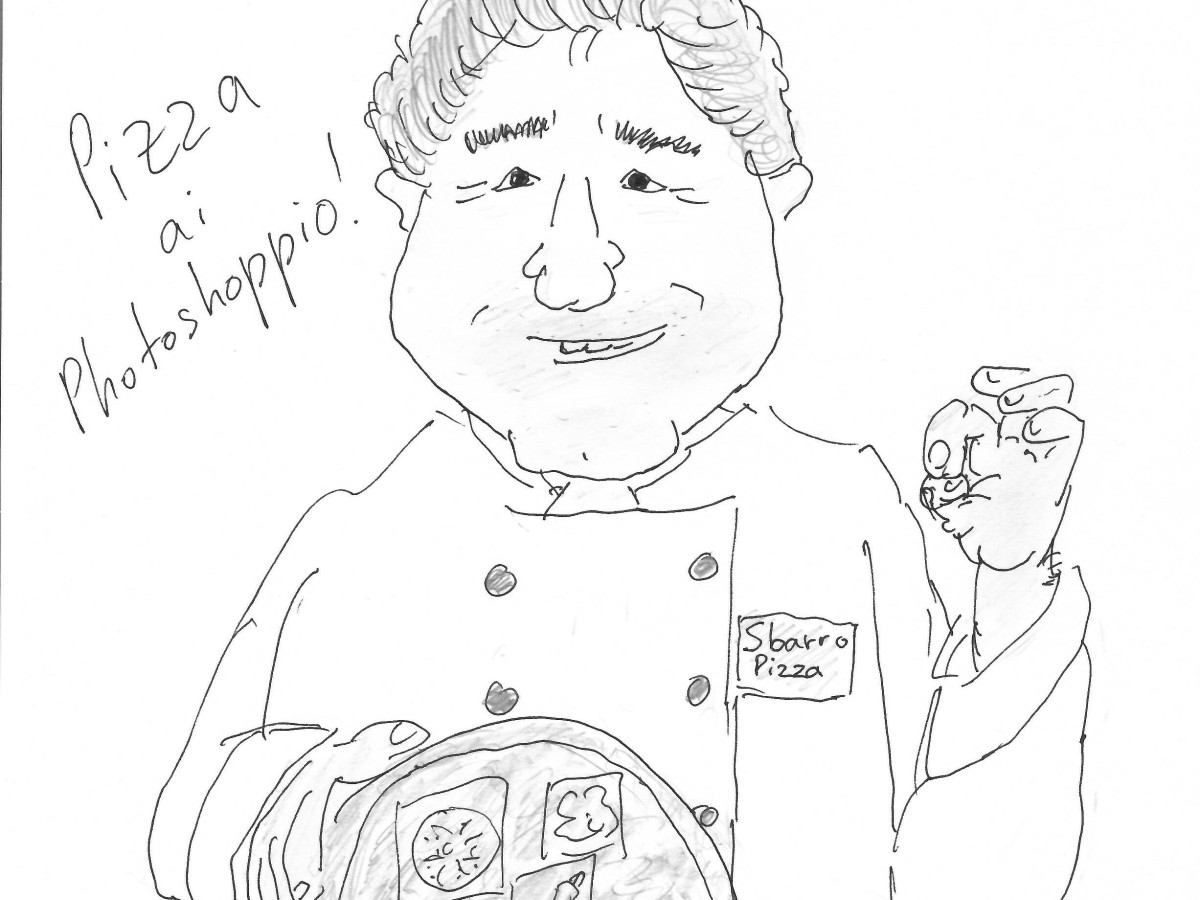


“Of course not every single modern scientist is dishonest, and not every last branch of professional science is corrupt. However, in practice, they might as well be.” Bruce Charlton, 2012, Not even trying, p. 35.
LikeLike
“Of course not every single modern scientist is dishonest, and not every last branch of professional science is corrupt. However, in practice, they might as well be” (p.35). Bruce Charlton, Not even trying, 2012.
LikeLike
If the NIH and ORI are as stupid as they seem to be with regards to due diligence, it’s hard to see how hacks like El Practico can resist ripping them off. Candy from a baby.
LikeLike
Dean John Daly expressed concern when I discussed this with him in 2021 but died unexpectedly a few weeks later. Interim Dean Amy Goldberg has not responded to e-mail. Michele Masucci assured me a year ago that investigation is underway. She recently left the institution. It is my impression that morale among honest Temple research faculty is has fallen.
LikeLike
Pingback: Temple of Stolen Pig Materials – For Better Science
The publisher initiated an investigation many months ago. I was excluded from the investigation. The publisher is also working with the other journals involved in their investigation and are following COPE guidelines. As far as I can tell the system works since I do see retractions from from the journal in other cases. The process seems slow, however, but the evidence has to be carefully considered. It would be disingenuous and confused thinking to assume there is some kind of conspiracy. I am not sure why the NIH office of integrity and Temple Univ is not working harder on this – perhaps they are and you and others are just not aware.
Ben Albensi, Editor-in-Chief, Molecular Neurobiology
LikeLike
Ben seems very sad
LikeLike
LikeLike
LikeLike
LikeLike
That’s because I wrote to him.
LikeLiked by 1 person